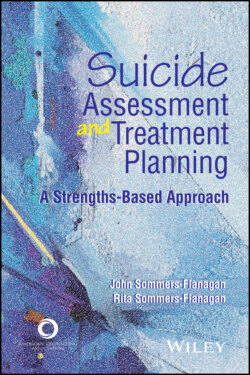Читать книгу Suicide Assessment and Treatment Planning - John Sommers-Flanagan - Страница 66
Postvention
ОглавлениеPostvention is an essential component of dealing with completed suicides. The term postvention was first coined by Edwin Shneid-man in 1968 at the inaugural gathering of AAS. In 2017, the Psychopathology Committee of the Group for the Advancement for Psychiatry defined and articulated the rationale for suicide postvention: “Postvention, or how clinicians manage the postsuicide aftermath, strengthens suicide prevention, destigmatizes the tragedy, operationalizes the confusing aftermath, and promotes caregiver recovery” (Erlich et al., 2017, p. 507).
Although research on postvention is limited, many different postvention protocols and strategies have been developed. For instance, a 234-page document titled Coming Together to Care is available for download at www.texassuicideprevention.org/wp-content/uploads/2013/06/TexasSuicidePrevention-2012Toolkit_8-31.pdf. This document is a postvention toolkit developed in Texas by a consortium of organizations dedicated to suicide prevention.
Postvention is an underdeveloped pillar of suicide prevention (Maple et al., 2019). This is partly because postvention effects are notoriously difficult to assess. Given that every suicide and community or school context is unique, identifying a control group for postvention efficacy research is impossible. In one review of 16 published studies of high research quality, the researchers concluded, “No protective effect of any postvention program could be determined for number of suicide deaths or suicide attempts” (Szumilas & Kutcher, 2011, p. 18). However, “contact with a counseling postvention for familial survivors of suicide generally helped reduce psychological distress in the short term” (p. 18).
Nationally and internationally, beliefs vary regarding how much attention to give a death by suicide. Famous or infamous deaths by suicide get substantial press coverage, and sometimes this raises awareness of the problem. However, the tone of the coverage is influential. A group of 21 academic, community, and not-for-profit organizations published a checklist of dos and don’ts for media reporting on suicide. They recommend that media organizations avoid the following:
Running sensationalistic headlines
Including photos of the location, the method, grieving families, or memorials
Using terms like epidemic to describe suicide
Describing suicides as not explainable or as happening “without warning”
Quoting from suicide notes
Using crime investigation reporting styles
Quoting police or first responders on suicide causes
Referring to suicides as “committed,” “successful,” “unsuccessful,” or “failed” (this list is adapted from “Recommendations for Reporting on Suicide,” n.d.)
Although tragic, suicides are not the fault of loved ones, caregivers, schools, or law enforcement. The best postvention efforts do not level blame or sensationalize but rather encourage grieving, healing, and prevention. (The Suicide Prevention Resource Center has information on an array of suicide-related topics, including postvention, at https://www.sprc.org/news/postvention-prevention.)
